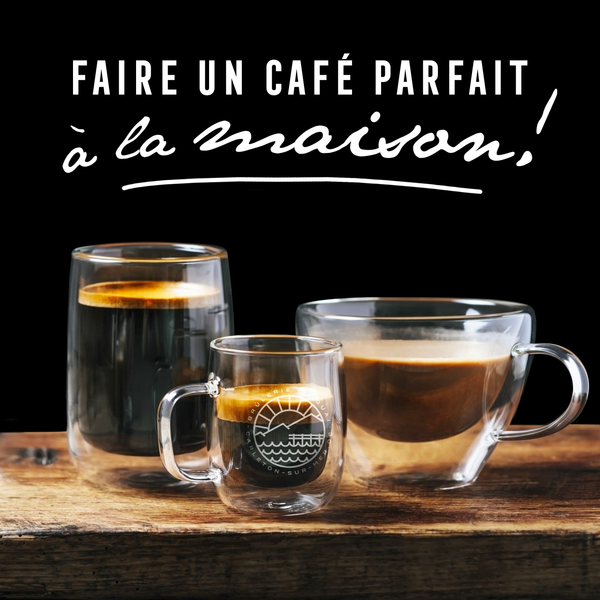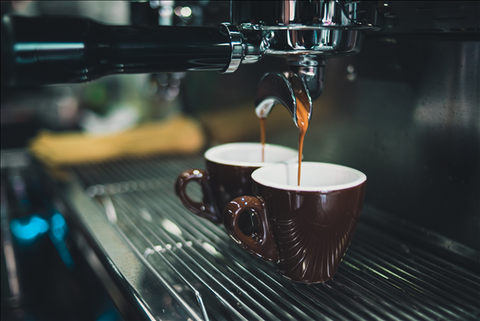
When we begin to discover coffee, and love at first sight strikes us, we begin to discover the perfect cup.
Like Colonel Aureliano Buendia, from Gabriel Garcia Marquez's novel, “100 Years of Solitude”, we sink into a frenzy that sometimes makes us seem crazy. But unlike the colonel and his research in alchemy to change lead into gold, we set out in search of the perfect cup.
Prepare a coffee that will stimulate our taste buds as much as our nostrils.
Here you are in front of a little-used path which will bring you happiness, but also its share of frustration if your technique is not appropriate.

10 tips for successfully preparing the best homemade coffee
To help you here is a list of tips that will get you closer to the perfect cup.
Use the best roasted coffee beans
Not all coffees are of the same quality. Follow your nose, smell the scents, ask the employees questions, email your favorite roaster, ask for samples. Selecting your grain is important. Even if you follow all the preparation steps, if you buy piquette at the start, it will be sock juice in the cup.
For my part, I love using one of these three coffees below to make espresso:
Grind coffee yourself
Coffee flavors come from the natural oils trapped in the coffee bean. Pre-ground coffee goes bad at lightning speed. Store your grains in an airtight container and grind them at the last minute. Finally, use a burr grinder, not a wing grinder with the small blades. The burr grinder gives a more consistent, less powdery grind.
Measure your coffee correctly with a scale
To be more precise and repeat your recipe every time, use a scale . The golden rule is 55g of coffee per 1 liter of water for a filter preparation and 69g per liter for a full immersion preparation. Use a rule of three to find the amount needed and adjust as needed. Weighing the water also allows you to be more precise. 1g = 1ml. One cup = 250g of water.
Rinse your coffee filter
If you are using a method that requires a paper filter, it is important to rinse it with hot water before adding ground coffee. Rinsing will remove small dust and the paper taste.
Pre-brew your coffee
Once the filter is rinsed, add the ground coffee and wet the coffee with hot water (95 ° Celsius). A 30 second pre-infusion will release the aromas and you will see the difference. Once the 30 seconds have passed, pour in your hot water slowly, making sure all the coffee is wet.
Respect the coffee brewing time
Each method has a specific infusion time. Brewing too long will result in a bitter taste, while too short will result in tasteless dishwater. Use a stopwatch (I use the microwave timer) for the infusion. A time of 3 minutes and 30 seconds to 4 minutes is sufficient for the majority of methods. Again, follow your nose and experiment. Controlling the steps will allow you to improve and recreate your recipe.
Let the coffee cool a little before drinking
Your coffee will still be very hot, let it sit for 1 to 2 minutes. This will cool and allow you to fully taste the aromas without burning your tongue.
Warm up your cups of coffee
While brewing, use the water from the kettle and fill your cups. This will prevent your coffee from cooling too quickly and will keep it hotter for longer. It is also a detail of the overall experience of taking a hot cup in your hands.
No milk or sugar in a good coffee
If you followed the previous steps, you shouldn't need to adulterate the coffee with anything else. The addition of milk and sugar (or drink) changes the taste, aromas and scent of the coffee. Excellent coffee does not need these gimmicks and should express sufficient richness to be enjoyable. If not, change your recipe settings.
Coffee too, it's a bit in moderation
Caffeine is present in coffee. Although we all have the right to choose our poisons, and caffeine can be harmful in too much quantity, drinking too much coffee impairs our ability to taste. It's as if our body is telling us that it has had enough. Again, follow your nose.
Use quality water
Water is in fact so present in coffee (99.9%), that we often forget it when we talk about coffee preparation. In Quebec, we are fortunate to have quality water available directly from the tap. If only the unpleasant smell of chlorine, and even fluoride in some places, tap water remains superior to bottled water.
Bottled water even causes certain problems since we sometimes find “spring water” type bottled water so low in minerals that the line between distilled water and mineral water is thin. ( See this blog )
And stay away from distilled water! Coffee needs minerals to properly absorb the solubles. My recommendation is to use a canister "pitcher" type filter that goes in the refrigerator. However, remember to change the cartridge from time to time according to the manufacturer's recommendations.
Also note that it is not the filter which removes the chlorine smell but rather the fact of leaving the water in the open air in the fridge which eliminates the chlorine smell. Putting the water in a simple pitcher of water will do the same thing, that's what I do...
So my recommendation to use a "Brita" pitcher is worth what it's worth. I invite you to read this text which puts several downsides on the marketing of filter pitcher companies who describe their system as a miracle product. The ideal system remains reverse osmosis . At this time, before investing in a system of this kind, and even if you are at a commercial level, a reverse osmosis system must be integrated into an approach to improving the quality of the coffee served taking into account " 4M".
Do not hesitate to contact me if you want to deepen your knowledge or if you want more details. It will make me happy.
Dany



Comments (1)
Très bon!
La préinfusion de 30 secondes est effectivement très importante et est trop souvent omise.